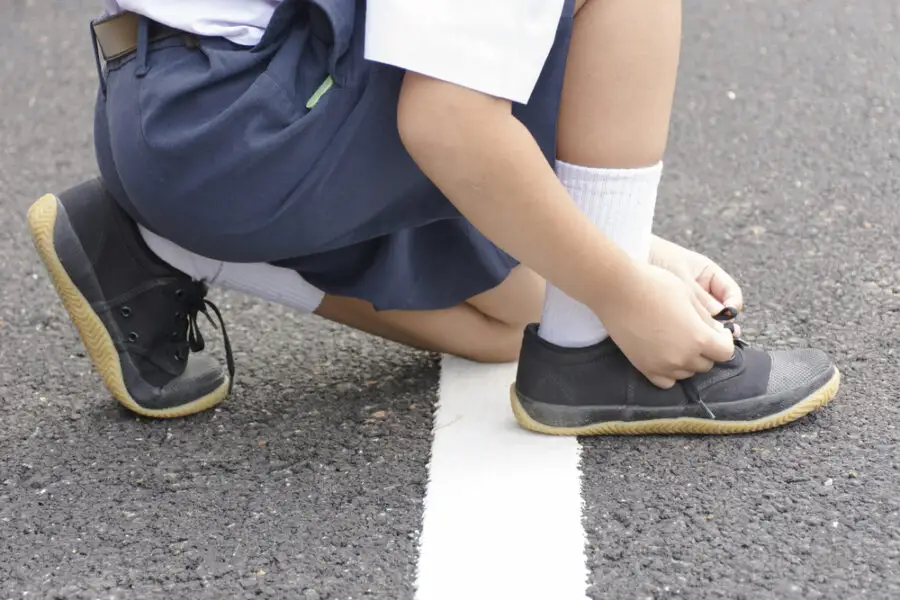
Back-to-school isn’t just about buying pencils and lunch boxes. Checking your child’s children’s shoes before the school year starts is just as important as buying school supplies. The right pair of children’s shoes can help prevent foot pain, support healthy development, and improve posture throughout the school year.
Why Proper Shoes Matter for Growing Feet
Children spend most of their school day standing, walking, or sitting. Unsuitable shoes can cause discomfort, affect posture, and even lead to long-term issues like flat feet or muscle fatigue. Since their bones are still forming, foot support is not just a luxury – it’s essential.
Key Features of Good Children’s Shoes
Supportive Sole and Heel
A firm, non-slip sole is essential. It provides:
- Stability when walking
- Natural foot movement
- Reduced fall risk
The heel area (called the counter) should be rigid. It keeps the heel aligned and prevents unwanted sideways movement.
Spacious Toe Box
The toe box should be wide enough to let toes move freely. This helps:
- Avoid friction and redness
- Prevent corn and small injuries
Secure Fit and Fastening
A proper fit ensures comfort all day long. Laces or velcro straps help keep the foot in place and prevent sliding inside the shoe. This lowers the chances of blisters or injuries, especially during recess or physical activity.
Allow about one finger’s width (1 cm) at the front of the shoe. This gives toes enough room and leaves space for foot growth.
Durable, Breathable Materials
Materials matter for comfort and hygiene. Prefer:
- Leather or synthetic leather for durability and breathability
- Mesh for good airflow
- Cotton or microfibre lining to reduce moisture and bad odours
The sole should be made of rubber or EVA (ethylene-vinyl acetate):
- Rubber offers strong grip and durability
- EVA is lightweight and absorbs shock well
Avoid very rigid plastic soles. They can restrict natural foot movement and cause discomfort.
Common Mistakes to Avoid
- Buying oversized shoes hoping they’ll last longer
- Choosing shoes that are too flexible and lack structure
- Using flat, worn-out shoes that no longer cushion or support the foot
These errors can cause blisters, poor posture, or even contribute to musculoskeletal problems over time.
Podiatrist Advice on Children’s Shoes
Podiatrists advise prioritizing function over style. Even if your child insists on picking their own shoes, guide them toward options that provide structure and comfort.
A podiatric evaluation can help detect conditions like flat feet or gait imbalances. In some cases, custom orthotics might be needed. But most of the time, a well-designed shoe is enough to keep their feet healthy.
Shoe Care Tips for Parents
- Rotate between two pairs to extend their lifespan
- Check the soles every two months for uneven wear
- Clean shoes weekly to avoid bacteria buildup
Regular checks ensure the shoes stay functional and clean, reducing the risk of skin problems or infections.
FAQ: Common Questions About Children’s Shoes.
Can my child wear sneakers all day?
Yes, provided they offer solid arch and heel support.
What’s the difference between flexible and rigid shoes?
Rigid shoes offer more structure, especially in the heel and arch. Overly flexible shoes may lead to instability or poor foot mechanics.
Are flat shoes harmful to kids?
Yes. Without heel cushioning or arch support, flat shoes can lead to fatigue, poor posture, or even joint pain.
Do children need orthotics at a young age?
Not necessarily. A podiatrist can determine this through an assessment. In many cases, supportive shoes are sufficient.
Conclusion: Start the School Year on the Right Foot
Start the year off right by choosing children’s shoes that support posture and growth.
Make foot health a priority this year. Book a podiatric consultation today to get personalized guidance from a qualified podiatrist.